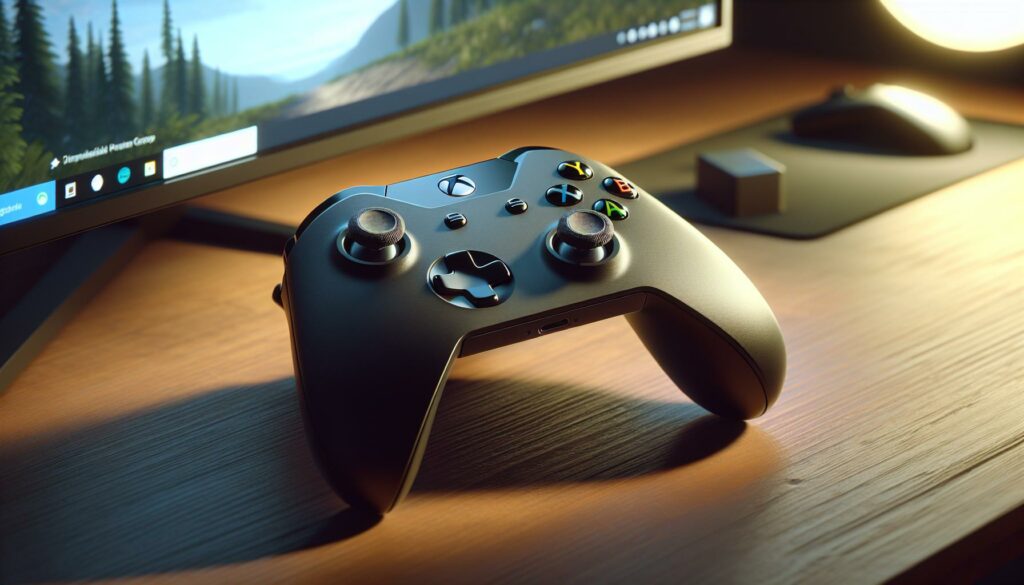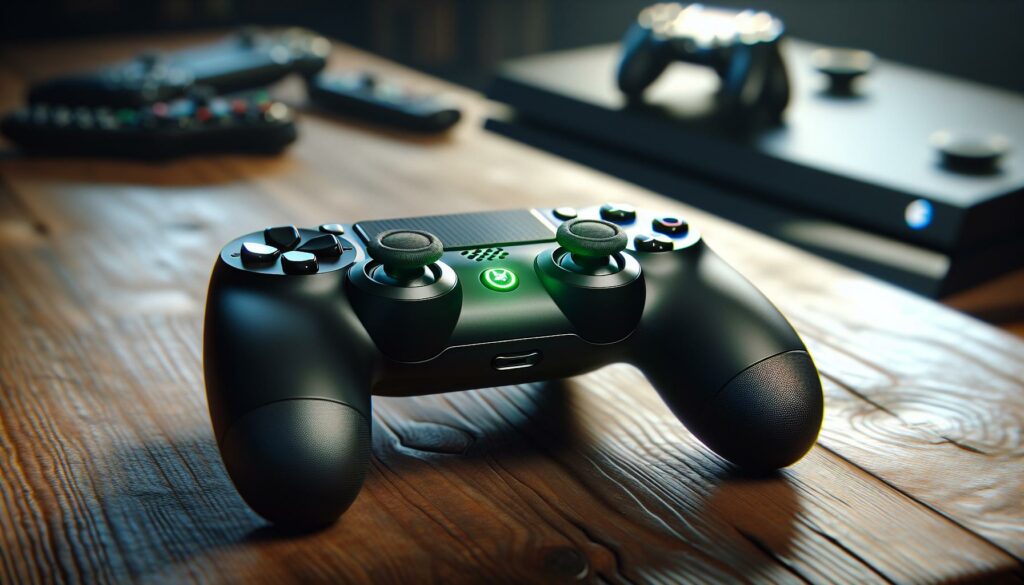As a gaming enthusiast, I know how frustrating it can be when your Xbox controller won’t connect properly to Windows 10. Whether you’re playing your favorite PC games or streaming from your Xbox, having the right drivers is crucial for a smooth gaming experience. I’ve helped countless gamers troubleshoot their controller connectivity issues, and I’ll share everything you need to know about Windows 10 Xbox controller drivers. From automatic updates to manual installations, there’s a solution for every situation. You’ll be surprised how simple it is to get your controller up and running once you understand the basics.
- Windows 10 Xbox controller drivers are essential software components that enable communication between the PC and controller, managing features like button mapping, vibration, and sensitivity settings.
- The driver package includes core files (xinput1_4.dll, xusb22.sys) and supporting software like the Xbox Accessories app and Windows Gaming Services.
- Common driver issues include detection problems, input lag, and connection failures, which can be caused by missing files, outdated versions, or hardware conflicts.
- Xbox controller drivers can be installed automatically through Windows Update or manually via Device Manager, with the automatic method being the simpler option.
- Troubleshooting connection problems involves checking USB ports, updating drivers, maintaining proper wireless distances, and eliminating potential interference sources.
Windows 10 Xbox Controller Driver
An Xbox controller driver functions as a critical software component that enables communication between Windows 10 and Xbox controllers. This specialized program interprets controller inputs into actions your PC understands, managing features like:
- Button mapping configurations for different games
- Vibration feedback settings
- Analog stick sensitivity adjustments
- Trigger response calibration
- Controller firmware updates
The Windows 10 Xbox controller driver package includes two essential components:
- Core Driver Files:
- xinput1_4.dll
- xusb22.sys
- Microsoft Xbox 360 Controller driver
- Supporting Software:
- Xbox Accessories app
- Xbox Game Bar integration
- Windows Gaming Services
Here’s a breakdown of compatibility with different Xbox controllers:
| Controller Type | Driver Version | Windows 10 Build |
|---|---|---|
| Xbox One | 10.0.19041.1 | 1903 or higher |
| Xbox Series X/S | 10.0.19041.3 | 20H1 or higher |
| Xbox 360 | 10.0.18362.1 | 1809 or higher |
Microsoft maintains these drivers through Windows Update, integrating them into the operating system’s core functionality. The driver software manages both wired USB connections and wireless protocols including Bluetooth and Xbox Wireless technology.
Common Xbox Controller Driver Issues on Windows 10
Xbox controller driver issues manifest through specific patterns that impact gaming performance on Windows 10 systems. I’ve identified these recurring problems through extensive troubleshooting sessions with various controller models.
Driver Not Detecting Controller
The most frequent Xbox controller detection issue occurs when Windows 10 fails to recognize the device upon connection. This problem typically appears in three main scenarios:
- Missing driver files in the Windows system directory
- Outdated driver versions causing compatibility conflicts
- Corrupted USB ports preventing proper device enumeration
To identify if it’s a detection issue:
- Check Device Manager for “”Unknown Device”” entries
- Verify the controller’s status in the Gaming Devices section
- Confirm the USB connection generates the Windows connection sound
Controller Input Lag Problems
Input lag manifests as delayed response times between controller actions and on-screen reactions. Common causes include:
- Bluetooth interference from nearby wireless devices
- Outdated firmware causing communication delays
- Background processes consuming system resources
The input lag severity varies by:
| Connection Type | Average Delay (ms) | Impact Level |
|---|---|---|
| USB Wired | 2-8 | Minimal |
| Wireless | 8-16 | Moderate |
| Bluetooth | 12-20 | Significant |
- Delayed button response in games
- Inconsistent analog stick movements
- Stuttering vibration feedback
- Random disconnections during gameplay
How to Install Xbox Controller Drivers on Windows 10
Installing Xbox controller drivers on Windows 10 involves two primary methods: automatic installation through Windows Update or manual installation using Device Manager. I’ll explain both approaches with specific steps to ensure a successful setup.
Automatic Driver Installation
Windows Update provides the simplest path to installing Xbox controller drivers. Connect your Xbox controller to your PC via USB cable or wireless adapter. Click the Windows Start button > Settings > Update & Security > Windows Update > Check for Updates. Windows automatically detects the controller, downloads applicable drivers from Microsoft’s servers, and installs them on your system. This process takes 2-5 minutes to complete when connected to a stable internet connection.
- Open Device Manager
- Press Windows key + X
- Select Device Manager from the menu
- Locate “”Xbox Peripherals”” or “”Other devices””
- Update Driver Software
- Right-click the Xbox controller listing
- Select “”Update driver””
- Choose “”Search automatically for updated driver software””
- Alternative Installation Method
- Download Xbox Accessories app from Microsoft Store
- Launch the app
- Connect controller when prompted
- Follow on-screen installation instructions
- Verify Installation
- Check Device Manager status (green checkmark)
- Test controller response in Xbox Accessories app
- Confirm controller appears under “”Xbox Peripherals””
- Troubleshooting Options
- Uninstall existing drivers first if experiencing issues
- Use specific driver versions from Microsoft’s website
- Remove conflicting USB devices during installation
Troubleshooting Xbox Controller Connection Problems
Xbox controller connectivity issues stem from various hardware and software complications. Here’s how to address specific connection problems based on your setup type.
USB Connection Issues
USB connection problems with Xbox controllers typically involve three main areas:
- Check USB port functionality by testing with other devices like mice or keyboards
- Examine the USB cable for physical damage including frayed wires or bent connectors
- Verify Device Manager status for error codes or yellow warning symbols
- Test alternative USB ports focusing on USB 3.0 ports for optimal performance
- Clear USB port power management by disabling selective suspend in Windows settings
Here’s a breakdown of common USB error codes:
| Error Code | Meaning | Primary Cause |
|---|---|---|
| Code 43 | Device Malfunction | Hardware failure |
| Code 45 | Device Not Connected | Poor connection |
| Code 28 | Driver Not Installed | Missing drivers |
Wireless Connection Problems
Wireless connectivity issues often relate to signal interference or pairing problems:
- Keep the controller within 30 feet of the PC for optimal connection
- Remove obstacles between the controller and wireless adapter
- Update Bluetooth drivers through Device Manager
- Clear existing controller pairings from Windows Bluetooth settings
- Reset the controller by holding the Xbox button for 10 seconds
- Replace controller batteries when power levels drop below 20%
- Metal objects near the wireless adapter
- Other Bluetooth devices operating nearby
- 2.4GHz wireless networks
- Microwave ovens in close proximity
- Cordless phones using similar frequencies
Updating Xbox Controller Drivers
Updating Xbox controller drivers maintains optimal performance on Windows 10 systems. Here’s how to update using both automatic and manual methods.
Using Windows Update
Windows Update streamlines the Xbox controller driver update process through these steps:
- Press Windows + I to open Settings
- Click on Update & Security
- Select Windows Update
- Click Check for Updates
- Select the Xbox controller driver update if available
- Click Download & Install
Key benefits of using Windows Update:
- Automatic compatibility verification
- Microsoft-certified driver versions
- Background installation process
- Automatic system restart scheduling
Using Device Manager
Device Manager provides manual control over Xbox controller driver updates:
- Right-click Start > Device Manager
- Expand Xbox Peripherals or Human Interface Devices
- Right-click Xbox Controller
- Select Update Driver
- Choose Search automatically for drivers
Advanced Device Manager options:
- Browse computer for specific driver files
- Roll back drivers to previous versions
- Uninstall problematic drivers
- View driver version details
| Status | Meaning |
|---|---|
| Yellow Triangle | Driver Issue |
| Green Check | Successfully Updated |
| Red X | Driver Disabled |
| Question Mark | Driver Not Found |
Alternative Driver Solutions for Xbox Controllers
Third-Party Driver Software
Third-party driver management tools offer advanced features for Xbox controller optimization. I’ve identified 3 reliable options:
- Driver Easy: Scans system hardware automatically identifies outdated Xbox controller drivers
- DriverFix: Creates driver backups maintains a database of Xbox controller drivers for different Windows versions
- Snappy Driver Installer: Provides offline driver installation options supports multiple Xbox controller variants
Custom Driver Solutions
Custom drivers enhance Xbox controller functionality beyond standard features:
- x360ce: Emulates Xbox 360 controller inputs enables compatibility with older games
- Steam Input: Customizes button mapping creates advanced controller profiles
- DS4Windows: Adds extra features like touchpad support extends compatibility with PS4 controllers
Driver Testing Tools
These diagnostic tools verify Xbox controller driver performance:
| Tool Name | Primary Function | Key Feature |
|---|---|---|
| GamepadTest | Input response testing | Latency measurement |
| JoyToKey | Controller mapping | Custom profile creation |
| Controller Companion | Driver compatibility check | System integration testing |
Open-Source Alternatives
Open-source driver solutions provide community-maintained options:
- XInput: Creates virtual controller support enables custom button mapping
- WinUSB: Establishes direct USB communication reduces input latency
- LibUSB: Implements cross-platform support maintains compatibility across systems
- XBox ACC Package: Combines controller firmware updates includes diagnostic tools
- DirectInput Package: Supports legacy controller functions enables older game compatibility
- HID Package: Implements standard USB protocols maintains basic controller functionality
Getting your Xbox controller to work smoothly on Windows 10 doesn’t have to be complicated. I’ve walked you through everything from basic driver installations to advanced solutions and troubleshooting methods. Whether you choose the automatic Windows Update route or opt for third-party tools I’ve discussed there’s a solution that’ll work for you. Remember that keeping your drivers updated is key to maintaining optimal gaming performance. If you run into issues don’t hesitate to try the alternative solutions I’ve shared. Your gaming experience is only as good as your controller’s performance and having the right drivers makes all the difference.



